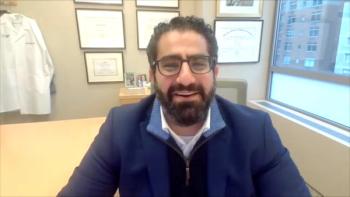
Risk Prediction Improvements Needed for Former Smokers at High Risk for Lung Cancer
Prediction models are needed to identify individuals at high risk for lung cancer who are former smokers and for whom low-dose computed tomography screening is not recommended, according to one study.
Former smokers for whom
LDCT screening is not currently recommended by the US Preventative Services Task Force for adults aged 50 to 80 years who are former smokers with a history of smoking 20 or more packs of cigarettes a year and who quit 15 or more years ago or current smokers who smoke less than 20 packs per year. However, the findings from this study highlight a need for prediction models to identify individuals from this high-risk subset of smokers so that they may undergo screening.
“These findings suggest that future studies should determine whether annual LDCT screening could reduce lung cancer mortality in these smokers,” wrote the researchers of the study.
In this population-based study published in
The study was based on data from patients enrolled in the Cardiovascular Health Study (CHS) from the National Heart, Lung, and Blood Institute. CHS data included a 5888 individuals 65 years or older living in the United States from June 1989 to June 1993. From this cohort, the researchers analyzed 4279 individuals who were free of cancer with a pack-year smoking history and duration of cessation information.
Between January 7, 2022, and May 25, 2022, the researchers conducted their analysis using a Fine Gray sub-distribution hazard model to incidence of lung cancer in the presence of competing risk of death and Cox cause-specific hazard regression models to estimate the HRs to estimate confidence intervals for lung cancer during a median (IQR) of 13.3 (7.9-18.8) years of follow-up through December 31, 2011.
Of these participants, the mean (SD) age was 72.8 (5.6) years, 2450 (57.3%) were female, 663 (15.5%) were African American individuals, 385 (83.8%) were White patients, and 31 (0.7%) were of another race or ethnicity.
Among 861 non–heavy smokers, the median pack-year smoking history was:
- 7.6 (3.3-13.5) pack-years for the 615 former smokers with 15 or more years of smoking cessation
- 10.0 (5.3-14.9) pack-years for the 146 former smokers with less than 15 years of smoking cessation
- 11.4 (7.3-14.4) pack-years for the 100 current smokers
Among 2445 heavy smokers:
- 34.8 (26.3-48.0) pack-years for the 516 former smokers with 15 or more years of smoking cessation
- 48.0 (35.0-70.0) pack-years for the 497 former smokers with less than 15 years of smoking cessation
- 48.8 (31.6-57.0) pack-years for the 432 current smokers
Furthermore, incidental lung cancer occurred in 10 of 1973 (0.5%) never-smokers, 5 of 100 (5.0%) current smokers with less than 20 pack-years of smoking, and 6 of 516 (5.0%) former smokers with 20 or more pack-years of smoking and 15 or more years of smoking cessation.
Compared with never-smokers, in the 2 groups for whom LDCT is not recommended, current nonheavy smokers had 9.5-times higher risk of lung cancer (HR, 10.54; 95% CI, 3.60-30.83) and former smokers with 15 or more years of smoking cessation had a 10.2-times higher risk (HR, 11.19; 95% CI, 5.40-23.21).
Lastly, the researchers adjusted for age, sex, and race/ethnicity in the analysis, finding current nonheavy smoker had a 9.06-times higher risk for lung cancer (HR, 10.06; 95% CI, 3.41-29.70) and former smokers with 15 or more years of smoking cessation had 9.2-times higher risk (HR, 10.22; 95% CI, 4.86-21.50) compared with never-smokers.
The study had several limitations, in which residual and unmeasured bias may have affected results. However, the researchers believe despite these limitations, the study provides new evidence of a high-risk subset of individuals for lung cancer for whom LDCT is not currently recommended.
“Future studies should also include development of machine learning and/or artificial intelligence algorithms to identify high-risk subsets of these smokers to optimize the risk-benefit ratio of such screening,” wrote the researchers. “These findings highlight the importance of abstinence and early smoking cessation for prevention of lung cancer.”
Reference
Faselis C, Nations JA, Morgan CJ, et al. Assessment of Lung Cancer Risk among smokers for whom annual screening is not recommended. JAMA Oncology. 2022;8(10):1428. doi:10.1001/jamaoncol.2022.2952
Newsletter
Stay ahead of policy, cost, and value—subscribe to AJMC for expert insights at the intersection of clinical care and health economics.















































